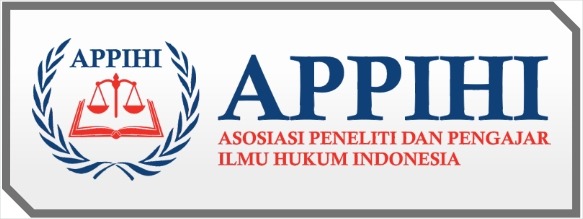Reconstructing Legal Protections for Justice Collaborators within the Criminal Justice System as an Effort to Uncover Common Crimes in Indonesia
DOI:
https://doi.org/10.61194/law.v1i3.94Keywords:
Crime, Justice Collaborator, Law Enforcement, ResearchAbstract
Perpetrators of general crimes who are willing to cooperate with law enforcement are commonly referred to as justice collaborators. These individuals play a crucial role as a valuable source of information for law enforcement agencies in unveiling general crimes, particularly those involving intricate criminal networks. Justice collaborators offer testimony, guidance, and even assist in securing substantial evidence to bolster criminal cases currently under investigation by authorities. The primary objective of this research is to examine the overhaul of legal safeguards for justice collaborators within the Indonesian criminal justice system, aiming to facilitate the detection of general criminal activities. This research adopts a normative legal research approach with a statutory focus. The author, in addressing the research question, relies on primary legal sources, secondary legal materials, and tertiary legal references as parameters for problem resolution. For data collection, a qualitative approach was chosen, specifically emphasizing a quality assessment. Consequently, the technique employed for data collection in this study is qualitative analysis. Within this research, two pivotal issues related to reconstruction will be elucidated. First, the study will delve into the prerequisites for conferring justice collaborator status in general crimes. Second, it will explore the reconstruction of general criminal acts as actions eligible for justice collaborator involvement.
References
Becker, P., & Bachman, R. (2020). Intimate Partner Violence in the Military: an Investigation of Reporting Crimes to Law Enforcement Officials. Journal of Family Violence, 35(4), 315–324. https://doi.org/10.1007/s10896-019-00091-x
Castillo-Manzano, J. I., Castro-Nuño, M., Lopez-Valpuesta, L., & Boby, J. (2022). Centralization versus decentralization of traffic law enforcement governance in Spain. Regional Studies, 56(11), 1976–1988. https://doi.org/10.1080/00343404.2021.2020743
Cerulli, C., Edwardsen, E. A., Hall, D., Chan, K. L., & Conner, K. R. (2015). Improving Coordinated Responses for Victims of Intimate Partner Violence: Law Enforcement Compliance With State-Mandated Intimate Partner Violence Documentation. Violence Against Women, 21(7), 897–907. https://doi.org/10.1177/1077801215584072
Edwards, J., & Simester, A. (2019). Crime, blameworthiness, and outcomes. Oxford Journal of Legal Studies, 39(1), 50–73. https://doi.org/10.1093/ojls/gqy031
Erickson, D. J., Farbakhsh, K., Toomey, T. L., Lenk, K. M., Jones-Webb, R., & Nelson, T. F. (2015). Enforcement of Alcohol-Impaired Driving Laws in the United States: A National Survey of State and Local Agencies. Traffic Injury Prevention, 16(6), 533–539. https://doi.org/10.1080/15389588.2014.995789
Ermakov, A. V, Damdintsurunov, V. A., & Piyannikov, V. S. (2016). Attention deconcentration method in organization of applied professional physical training of power ministry and law enforcement officials: Application specifics. Teoriya i Praktika Fizicheskoy Kultury, 4, 57–58. https://www.scopus.com/inward/record.uri?eid=2-s2.0-85019627202&partnerID=40&md5=e886f266626cabde58a5aec58680cf71
Gover, A. R., Paul, D., & Dodge, M. (2011). Law enforcement officers’ attitudes about domestic violence. Violence Against Women, 17(5), 619–636. https://doi.org/10.1177/1077801211407477
Hansen, M. A., Navarro, J. C., & Malvitz, S. A. (2022). Assessing law enforcement websites: a comparative analysis exploring types, quantity and quality of information available. Policing, 45(2), 298–314. https://doi.org/10.1108/PIJPSM-09-2021-0128
Jennings, W. G., Powers, R. A., & Perez, N. M. (2021). A Review of the Effects of the Violence Against Women Act on Law Enforcement. Violence Against Women, 27(1), 69–83. https://doi.org/10.1177/1077801220949694
Lenk, K. M., Toomey, T. L., Nelson, T. F., Jones-Webb, R., & Erickson, D. J. (2014). State and local law enforcement agency efforts to prevent sales to obviously intoxicated patrons. Journal of Community Health, 39(2), 339–348. https://doi.org/10.1007/s10900-013-9767-9
López-Vallejo, M., & del Pilar Fuerte-Celis, M. (2021). Hybrid Governance in Northeastern Mexico: Crime, Violence, and Legal-Illegal Energy Markets. Latin American Perspectives, 48(1), 103–125. https://doi.org/10.1177/0094582X20975016
Messing, J. T., Campbell, J., Dunne, K., & Dubus, S. (2020). Development and testing of the danger assessment for law enforcement (DA-LE). Social Work Research, 44(3), 143–156. https://doi.org/10.1093/swr/svaa005
Purba, N., Erwinsyahbana, T., Tanjung, A. M., & Pramono, R. (2021). Mitigation of children from the crime of pedophilia behavior. Journal of Legal, Ethical and Regulatory Issues, 24(Special Issue 1), 1–8. https://www.scopus.com/inward/record.uri?eid=2-s2.0-85112841318&partnerID=40&md5=0f6dfbcacc2f67d8582cd8082cd710d3
Silalahi, H. (2023). Juridical Analysis of Tax Criminal Law Enforcement: an Overview of Legal Regulations and its Implementation in Indonesia. Ilomata International Journal of Tax and Accounting, 4(3), 561–583. https://doi.org/10.52728/IJTC.V4I3.778
Van Rooij, B., Zhu, Q., Li, N., & Wang, Q. (2017). Centralizing Trends and Pollution Law Enforcement in China. China Quarterly, 231, 583–606. https://doi.org/10.1017/S0305741017000935
Zoorob, M. (2022). There’s (rarely) a new sheriff in town: The incumbency advantage for local law enforcement. Electoral Studies, 80. https://doi.org/10.1016/j.electstud.2022.102550
Constitution of the Republic of Indonesia of 1945
Law Number 13 of 2006 on Witness and Victim Protection
Law Number 31 of 2014 on Amendments to Law Number 13 of 2006 on Witness and Victim Protection
Law Number 12 of 2011 on the Formation of Legislation, Criminal Procedure Code, Criminal Code
Regulation of the Chairman of the Witness and Victim Protection Agency Number 6 of 2010 on Procedures for Providing Protection to Witnesses and Victims
Circular Letter of the Supreme Court Number 4 of 2011 on Treatment for Reporters of Criminal Acts (Whistleblowers) and Collaborating Witnesses (Justice Collaborators) in Certain Criminal Cases.
Constitutional Court Decision Number: 5/PUU/VIII/2010






